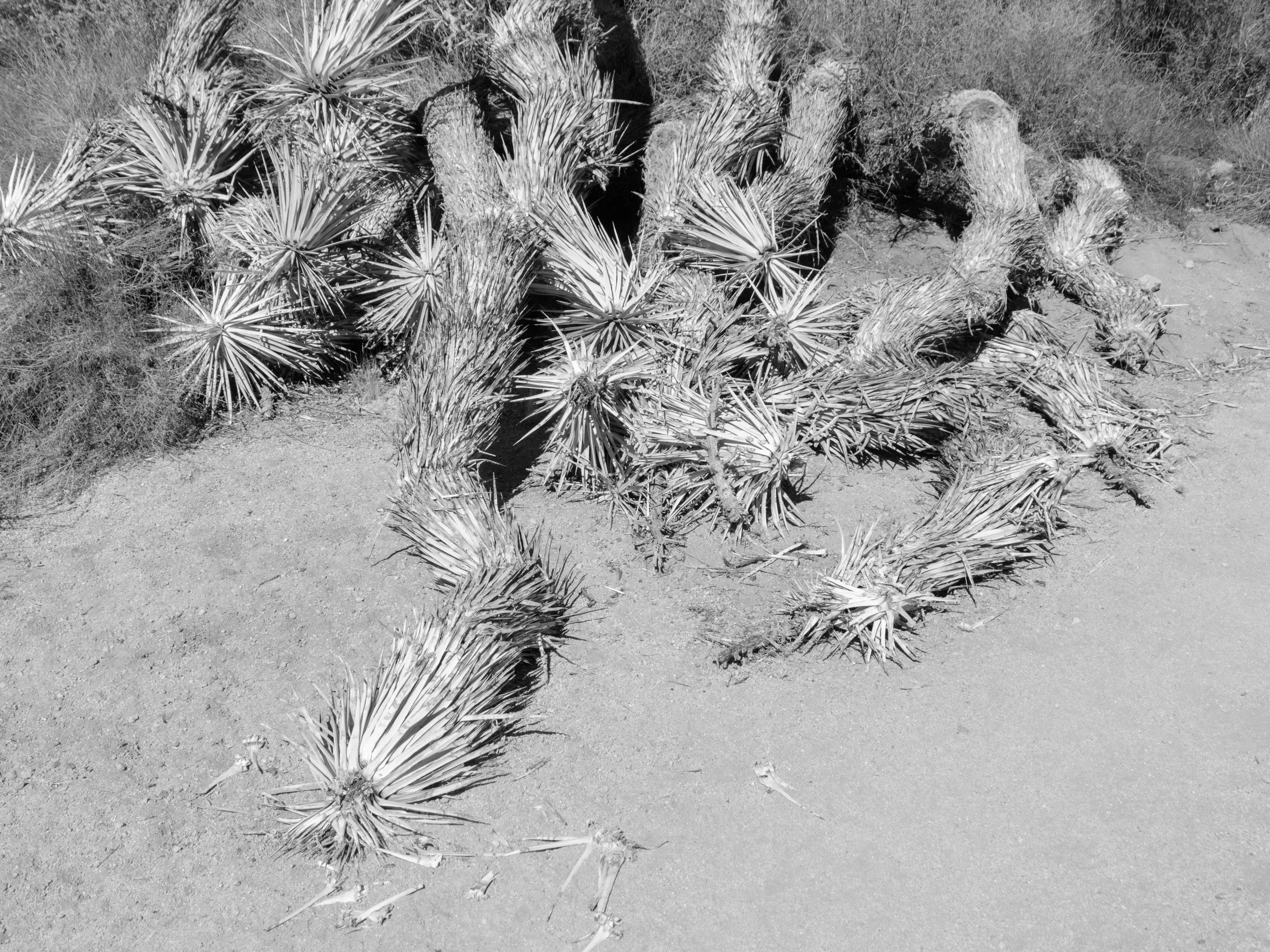Are Humans the Ultimate Invasive Species?
BY PAUL MARTINEZ
Photography © Paul Martinez
The wilderness has always been a place where humans confront their identity—both as part of nature and as its most disruptive force. During a recent wilderness training, my instructor, presented a provocative hypothetical: Should we remove invasive plants from the wilderness, even if it means interfering with the natural landscape? What if leaving them untouched leads to the extinction of the Joshua tree?
My immediate answer was no. The idea of intervening in nature, even with good intentions, left me uneasy. Who am I to manipulate a system far older and more intricate than myself? There is a cycle and pattern to life that transcends any one species or individual—a rhythm that has existed long before me and will persist long after I am gone. To tamper with that felt hubristic, like attempting to rewrite a story I barely understand.
Most of my peers disagreed, voting yes. Their reasoning was that Joshua trees are not at fault for their plight. The invasive species threatening them didn’t belong there and should therefore be eradicated. Their arguments were persuasive, yet their certainty only deepened my unease. As the debate unfolded, someone asked a question that stopped us all: Isn’t everything, to some degree, an invasive species?
It’s a provocative thought. Invasive species are defined as non-native organisms that disrupt ecosystems and harm biodiversity. But in the grand sweep of life, is any species truly “native”? Organisms move, adapt, and evolve across landscapes, often in ways that blur the boundaries between “belonging” and “intruding.” Humanity’s impact on the Earth only magnifies this ambiguity.
We encroach on every environment we touch, displacing species, altering ecosystems, and consuming resources at unprecedented scales. If there’s a textbook definition of an invasive species, could we not qualify?
And yet, it feels inadequate to reduce humanity to this label. Unlike other organisms, we possess the ability to reflect on our actions, adapt our behavior, and even question our place in the natural order.
This duality is central to our dilemma. On the one hand, our unchecked expansion mirrors the behavior of invasive organisms, thriving at the expense of everything else. Like an apex predator that overhunts, humanity risks destabilizing the very systems that sustain us. On the other hand, our capacity for moral reasoning sets us apart. Unlike kudzu or zebra mussels, we can recognize the harm we cause—and we can choose to do better.
The Wilderness Act of 1964 reflects this tension. It envisions humans as temporary visitors to the wild, tasked with observing and preserving, not controlling. Yet, managing wilderness often requires intervention—removing invasive species, suppressing wildfires, or reintroducing endangered animals. Even our attempts to leave nature “untrammeled” reveal how intertwined we are with the systems we seek to protect.
The Joshua tree scenario epitomizes this paradox. To remove an invasive species might save an iconic landscape, but it also reinforces the idea that humans should dictate what belongs and what doesn’t. Is this stewardship or hubris? Are we preserving nature or imposing our values on it?
The wilderness doesn’t give us answers. It only reflects the consequences of our actions. Will we continue as the ultimate invasive species, consuming until nothing remains, or evolve into stewards fostering balance and coexistence? For now, we are caught in between—part of the Earth, yet leaving an enduring mark as mere visitors.
